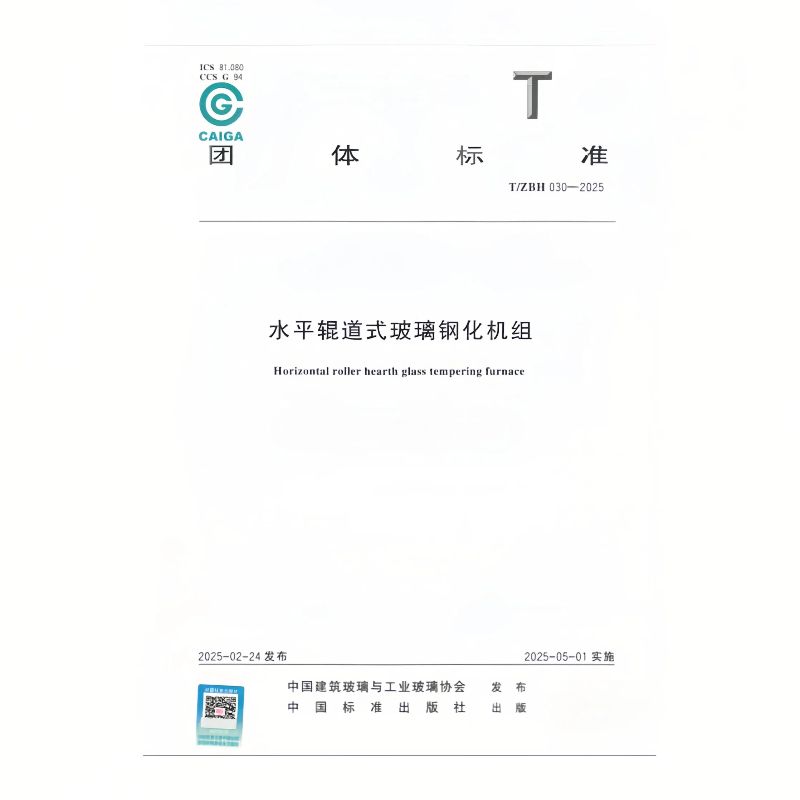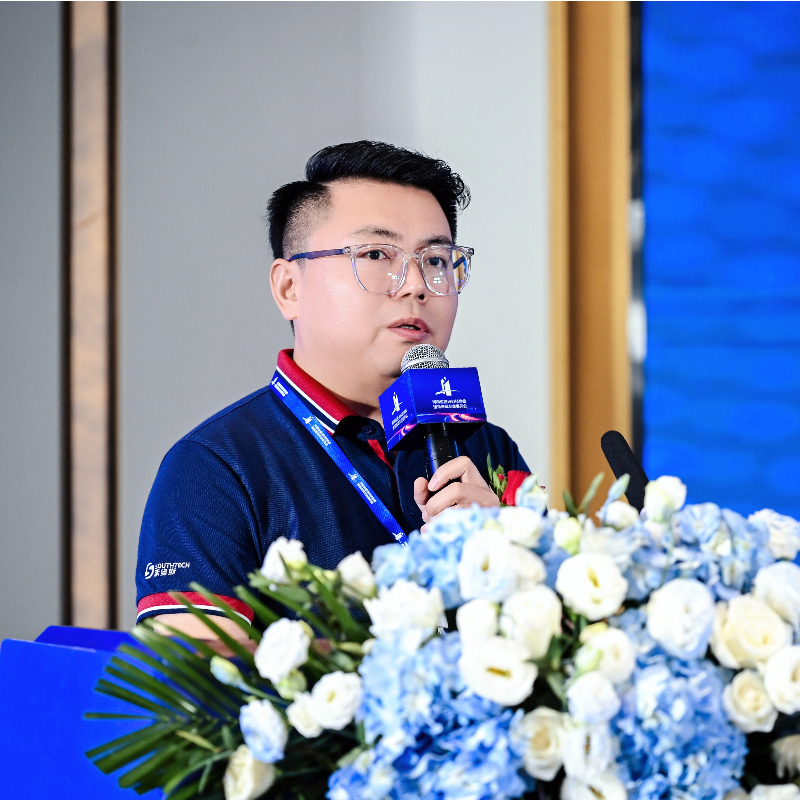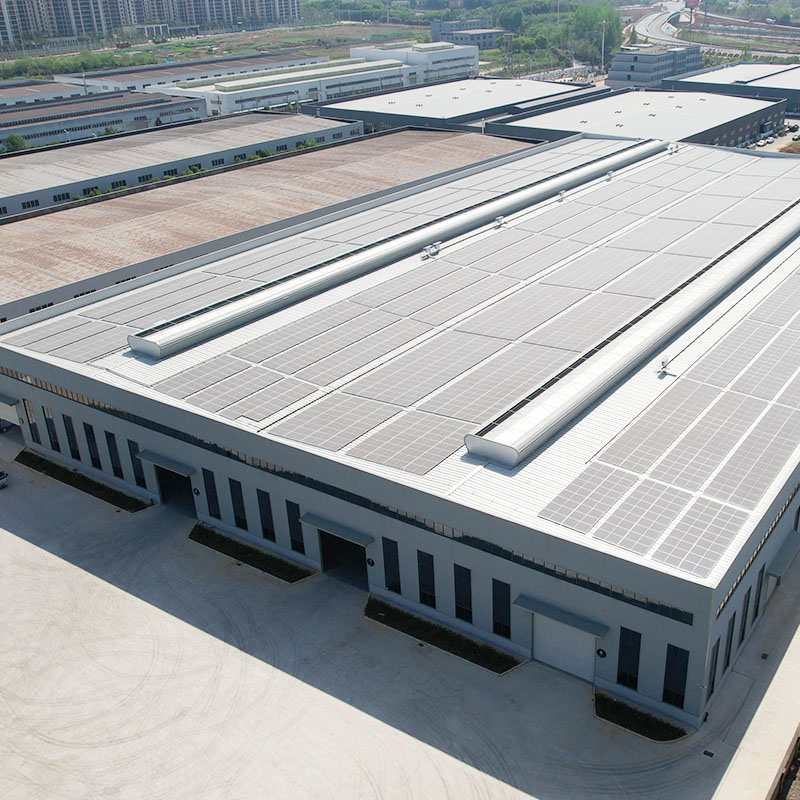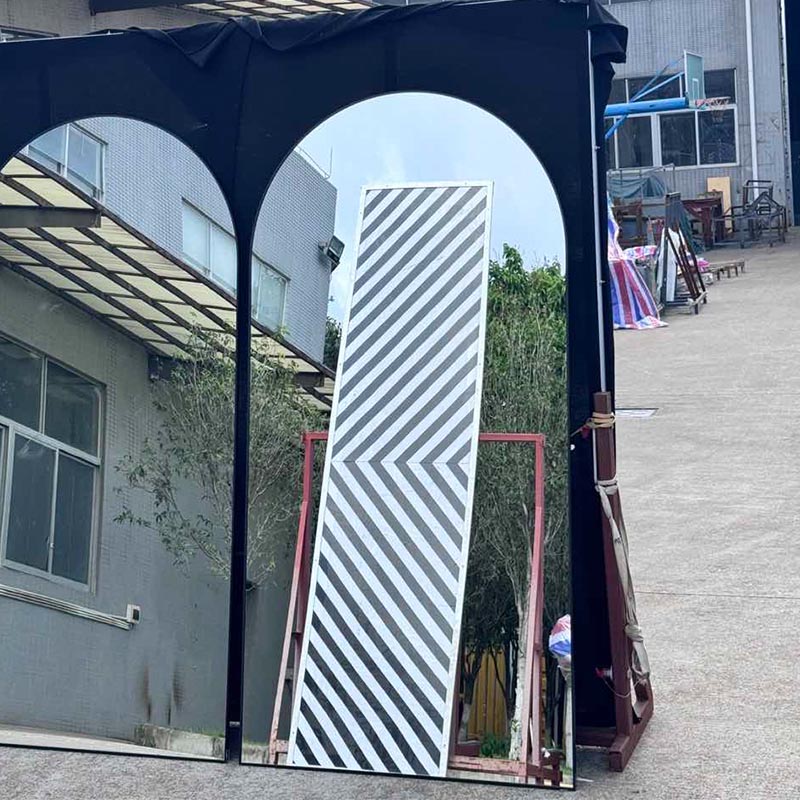Glass Tempering Furnace: Science Popularization of Core Equipment for Safety Glass
2025-09-06
Glass Tempering Furnace: Science Popularization of Core Equipment for Safety Glass
Tempered glass has become a key material in industries such as building curtain walls, home appliances, photovoltaics, and fire protection due to its high strength, safety, and excellent weather resistance. As the core equipment for tempered glass, glass tempering furnaces convert ordinary glass into high-performance tempered glass through precise physical strengthening processes, widely serving diversified industries such as construction, automobiles, home appliances, and new energy.
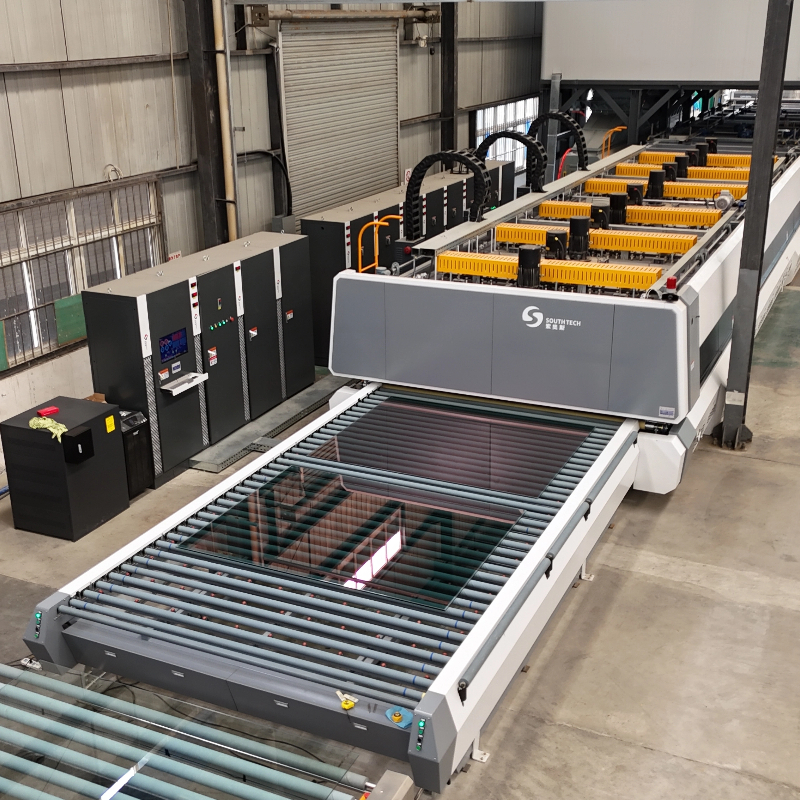
1、Tempered glass processing mechanism: the key process flow of glass tempering furnace
The glass tempering furnace achieves physical strengthening of ordinary glass through three-step precision processing of "heating-cooling-stress setting". Its core is to use temperature gradient to construct a stress balance system inside the glass. The specific process is as follows:
(1)Uniform heating stage: precise temperature control ensures glass homogenization
At this stage, ordinary glass needs to be placed in the heating furnace body of the glass tempering furnace, and heated at a stable rate to 600 ℃ -700 ℃ (close to the softening point of the glass). Through the synergistic effect of the upper and lower independent heating chambers and the high-temperature resistant ceramic roller conveyor, the temperature of the glass from the surface to the interior is ensured to be uniform and consistent.
Key technical requirements:Uneven heating can easily lead to stress concentration, cracking, or surface optical distortion (such as wavy patterns) during glass cooling. For special coated glass such as LOW-E energy-saving glass, the glass tempering furnace needs to use forced convection technology to penetrate the coating and achieve uniform heating of the substrate, avoiding coating detachment due to local high temperature.
(2)Rapid cooling stage: Temperature difference effect builds stress layer
After heating is completed, the glass quickly enters the cooling section of the glass tempering furnace, and high-pressure cold air blows out a uniform "air curtain" through the nozzles of the cooling section, achieving rapid cooling of the glass surface (cooling time only takes a few tens of seconds).
Principle of stress formation:The glass surface hardens and shrinks first due to rapid cooling, while the interior remains in a high-temperature softening state, followed by slow cooling and continuous shrinkage. The temperature difference effect of "hardening on the surface and shrinking on the inside" creates a compressive stress layer on the surface of the glass (increasing compressive strength) and a tensile stress layer on the inside (optimizing tensile performance), which balance each other and significantly improve the overall strength of the glass.
(3)tress Setting Stage: Stabilizing Structure to Ensure Safety Performance
After cooling is completed, under the action of the glass tempering furnace, the stress structure of "external press and internal pull" inside the glass is permanently formed, and its mechanical and safety properties are qualitatively improved:
Mechanical properties: The impact strength is 3-5 times higher than that of ordinary glass, and the bending strength is 2-3 times higher;
Safety performance: After crushing, it forms blunt angled particles without sharp edges (Fragmented particle size ≤ 5mm), which can prevent sharp fragments from injuring people;
Temperature resistance:•The temperature difference resistance of ordinary glass has jumped from 50 ℃ -80 ℃ to over 200 ℃, and can adapt to extreme environments such as high temperatures in ovens and outdoor day night temperature differences.
2、Equipment category and Application: Differences between Flat Tempering Furnaces and Bent Tempering Furnaces
A high-performance glass tempering furnace consists of a loading and unloading table, heating system, cooling system, electrical control system, and auxiliary functional modules. According to the shape requirements of tempered glass, glass tempering furnaces are mainly divided into two categories: flat tempering furnaces and bending tempering furnaces. The two have clear division of difference in structural design, process parameters, and application scenarios, which can meet the customized production needs of different industries.
| Device Type | Core Functionality | Technical Features | Typical Application |
|---|---|---|---|
| Flat Glass Tempering Furnace | Physical strengthening of flat glass | 1. Adopting continuous production design, compatible with multiple glass types (float glass, LOW-E glass, high borosilicate glass, etc.); 3. The heating and cooling system can dynamically adjust parameters according to the thickness of the glass. |
1. In the field of architecture: door and window glass, curtain wall glass, skylight glass, etc; 2. In the field of household appliances: refrigerator door glass, oven observation window, refrigerator compartment glass, etc; 3. In the field of new energy: photovoltaic module cover plates, etc. |
| Bent Glass Tempering Furnace | Forming and Strengthening of Curved/Irregular Glass |
1.Equipped with adjustable molds, supporting curved surface processing within a range of radians; 2. Simultaneously achieve glass bending and shaping during the heating stage, and ensure uniform stress during the cooling stage; 3. Optical accuracy control: Transmittance deviation ≤ 2% to avoid distortion in curved glass imaging. |
1. Automotive field: side window glass, sunroof glass, rear windshield; 2. In the field of rail transit: subway/high-speed rail window glass, etc; 3. In the field of architectural decoration: curved curtain walls, irregular art glass, etc. |
1、Industrial value: Empowering downstream industries with glass tempering furnaces
(1) Security standard upgrade: Establishing a solid bottom line for critical scenario protection
In fields with extremely high safety requirements such as construction and automobiles, tempered glass is a mandatory material for use (such as GB50210 "Quality Acceptance Standards for Building Decoration and Renovation Engineering" which requires that tempered glass must be used for curtain wall glass). The glass tempering furnace uses a stable stress forming process to ensure that tempered glass meets the safety characteristics of "no sharp angles when broken" and "no impact breakage", effectively reducing the risk of injury in scenarios such as building falls and car collisions.
(2)Application boundary expansion: Breaking through the limitations of glass performance
Ordinary glass is limited in its application scenarios due to its fragility and poor temperature resistance. After processing in a glass tempering furnace, the mechanical properties and weather resistance of the glass are greatly improved, making it suitable for more extreme environments:
Photovoltaics field:tempered photovoltaic cover plates can withstand hail impact (diameter ≤ 50mm hail impact without damage), ultraviolet aging (service life ≥ 25 years), and ensure long-term stable operation of photovoltaic modules;
Household appliances field:• tempered oven glass can withstand sudden cooling and heating at a high temperature of 250 ℃ (from 250 ℃ to 20 ℃ without breaking), meeting the safety requirements of kitchen appliances.
(3)Improving production efficiency: promoting the development of industry scale and intelligence
Traditional glass strengthening relies on manual operation, which is inefficient and has poor product consistency. Modern glass tempering furnaces achieve:
Capacity improvement:The daily production capacity of the continuous forced convection glass flat tempering furnace can reach 2000 ㎡ -10000 ㎡ (depending on the furnace type selection), which is 14% higher than the traditional radiation furnace;
Cost optimization: Automated design reduces labor requirements by over 60%, energy consumption by 15-30%, and is compatible with multiple types of glass production. Enterprises can undertake cross industry orders without the need to replace glass tempering furnaces;
Stable quality control:The precision of parameter control has been improved to ± 2 ℃ (temperature) and ± 0.5m/min (speed), and the product qualification rate has increased from 85% to over 99%.
As a leading technology enterprise in the field of glass tempering furnaces, SOUTHTECH always takes "technological innovation, shaping future manufacturing" as its core. Through continuous research and development investment, it has launched products such as Simba series high-end glass tempering furnaces and Loong series high-end continuous glass tempering furnaces. In the future, it will further upgrade the performance of glass tempering furnaces and provide more efficient and reliable glass tempering solutions for downstream industries.

